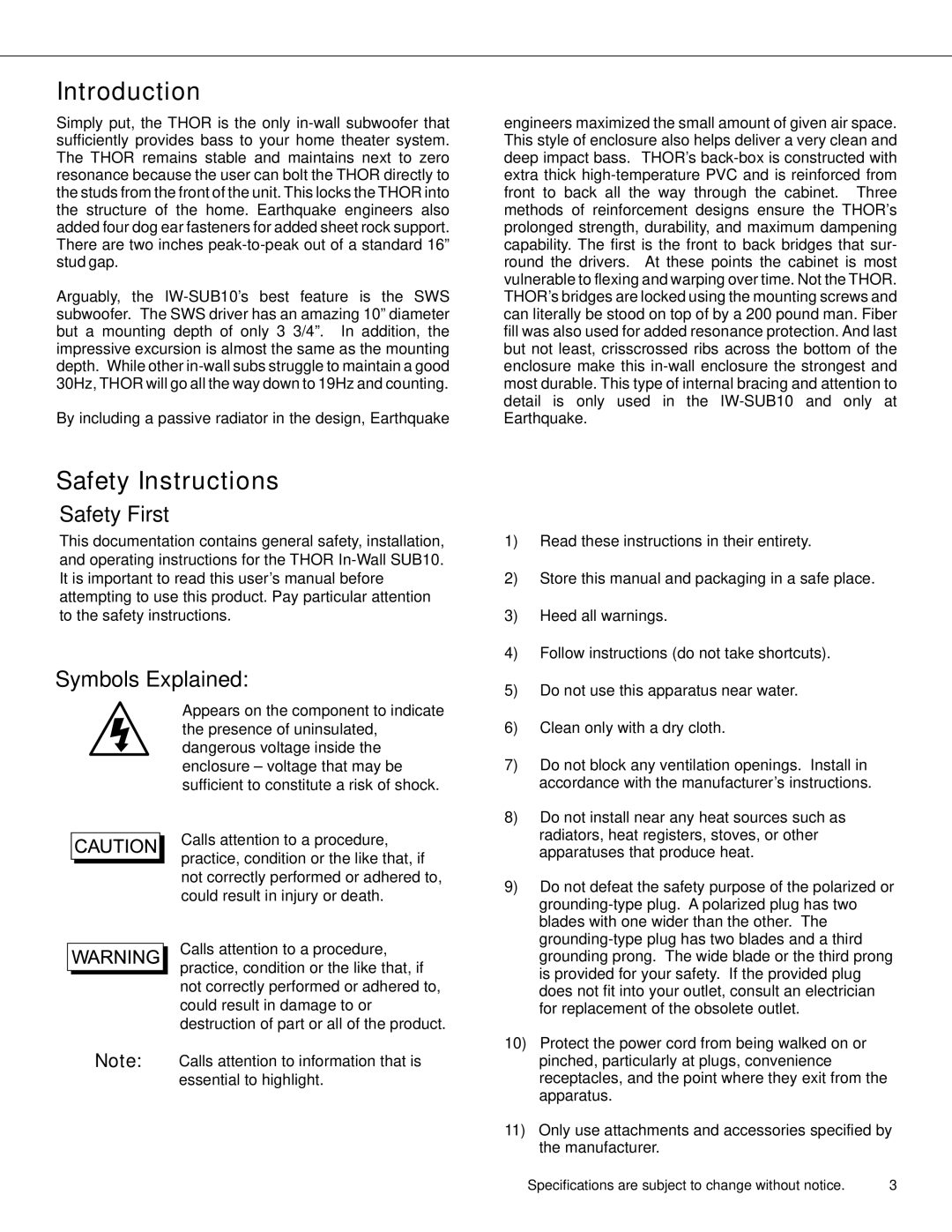THOR IW--SUB10 specifications
The Earthquake Sound THOR IW-SUB10 is a powerful in-wall subwoofer designed to deliver deep and impactful bass without taking up valuable floor space. Engineered with a combination of innovative technologies and high-quality components, the THOR IW-SUB10 is an ideal choice for audiophiles and home theater enthusiasts.One of the standout features of the THOR IW-SUB10 is its 10-inch high-excursion driver. This driver is specifically engineered to produce low-frequency sound waves that resonate deeply, creating an immersive audio experience. Coupled with a robust amplifier, the subwoofer can handle substantial power, allowing it to fill large spaces with consistent, punchy bass.
The THOR IW-SUB10 incorporates Earthquake Sound's patented "Pulse Bass" technology, which optimizes the driver’s performance and enhances its overall efficiency. This technology ensures that the subwoofer can deliver clear, distortion-free bass even at high volumes. With a frequency response that can reach as low as 20Hz, users can enjoy the full range of audio clarity, from subtle rumblings to thunderous lows.
The design of the THOR IW-SUB10 is another defining aspect. It features a low-profile, in-wall construction that makes it easy to integrate into existing spaces. This design not only saves space but also creates a cleaner aesthetic, making it an attractive addition to modern home environments. Installation is made straightforward with included mounting hardware, allowing for a seamless fit within wall cavities.
Furthermore, the THOR IW-SUB10 is compatible with a variety of audio systems, offering flexible connection options. Users can easily connect the subwoofer to their home theater system, stereo setup, or other audio devices, enhancing their overall sound experience. This versatility makes it suitable for various applications, whether for movies, music, or gaming.
In terms of durability, the THOR IW-SUB10 is built with high-quality materials that ensure longevity and reliability. This subwoofer is designed to withstand intense use, providing years of high-performance audio enjoyment.
In summary, the Earthquake Sound THOR IW-SUB10 is a remarkable in-wall subwoofer that combines powerful sound, innovative technology, and sleek design. With its impressive bass performance, efficient driver technology, and user-friendly installation, it is an excellent choice for anyone looking to elevate their audio experience while maintaining a minimalistic aesthetic.

